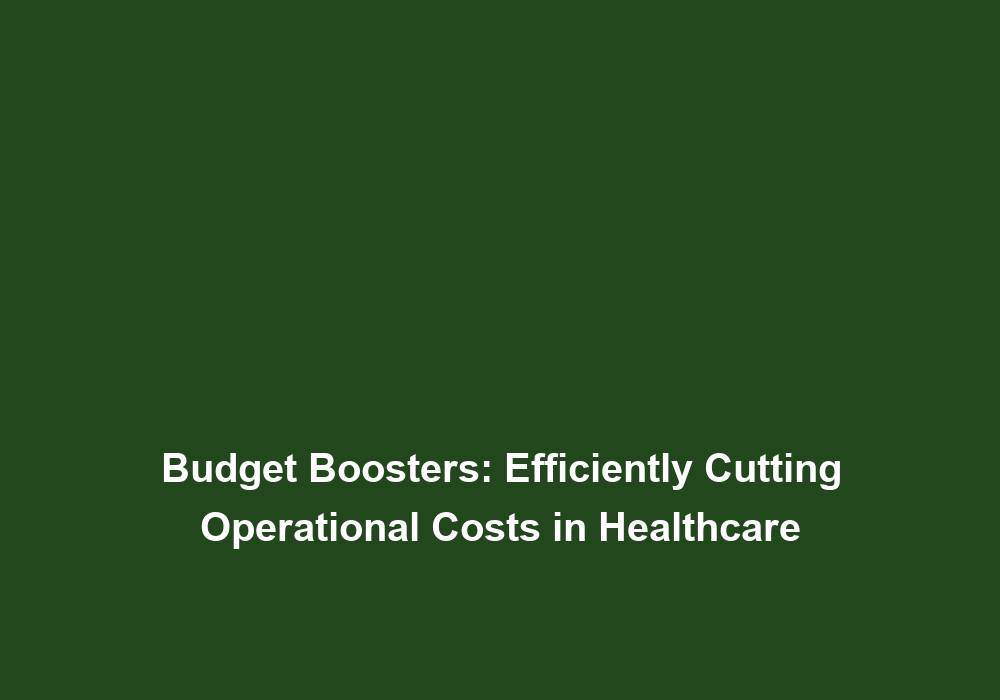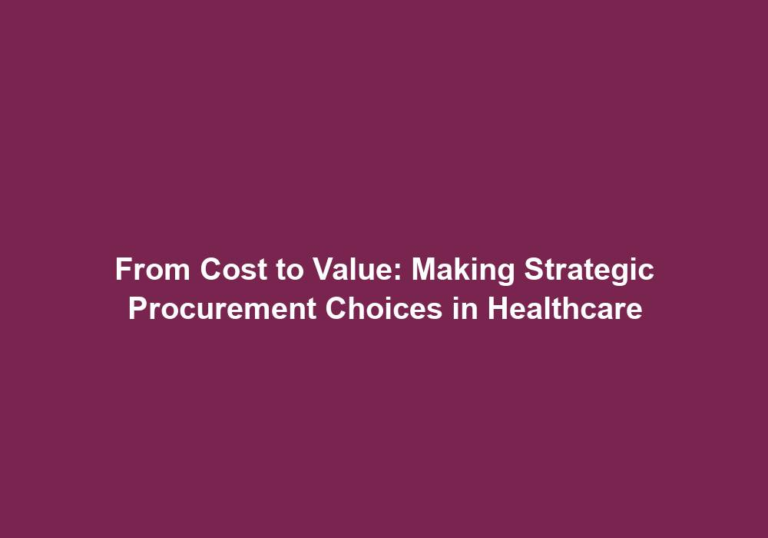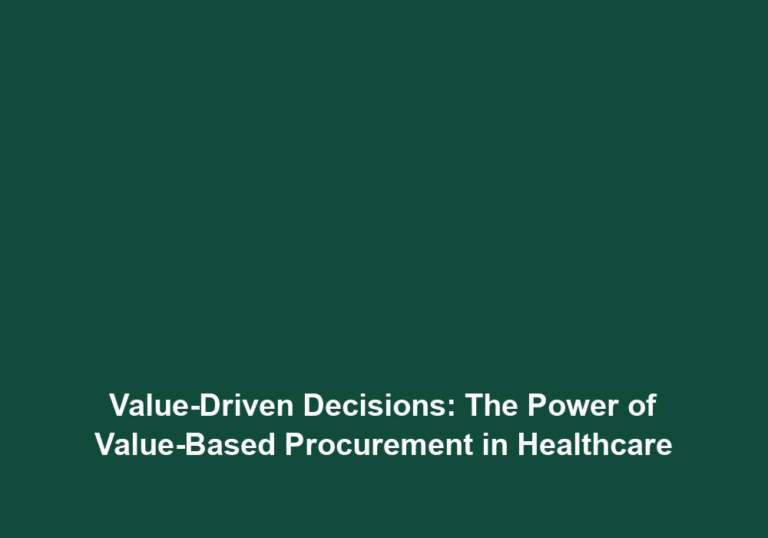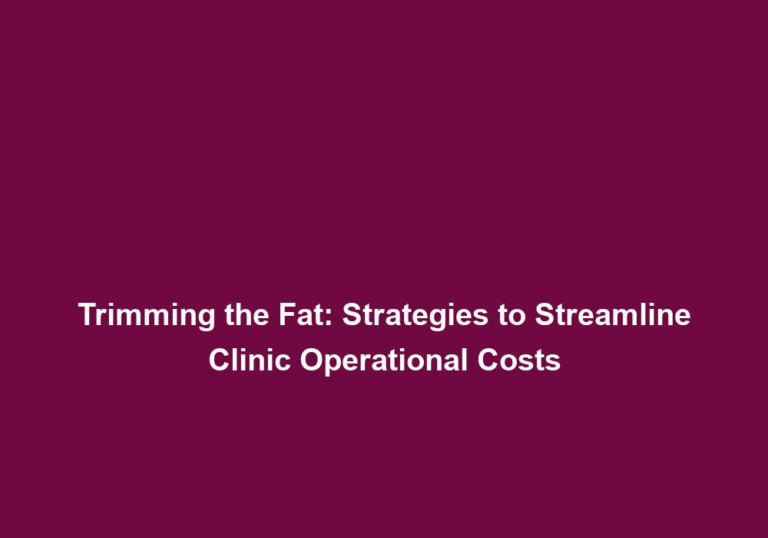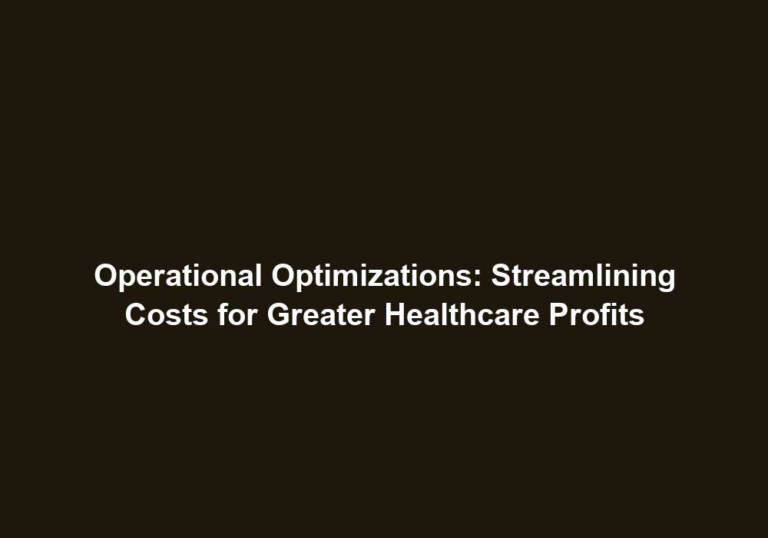Budget Boosters: Efficiently Cutting Operational Costs in Healthcare
In today’s healthcare industry, controlling operational costs is of paramount importance. With the rising expenses associated with healthcare services, it is crucial for healthcare organizations to find effective ways to reduce operational costs without compromising on the quality of patient care.
This article aims to provide valuable insights and strategies for healthcare providers to efficiently cut operational costs while maintaining high standards of healthcare delivery.
Analyzing Current Expenses
Before implementing any cost-cutting measures, it is essential to conduct a thorough analysis of your healthcare organization’s current expenses. This analysis will help identify areas where spending can be reduced or optimized. Consider the following steps when analyzing expenses:
-
Review Financial Statements: Scrutinize financial statements, including income statements, balance sheets, and cash flow statements, to gain a comprehensive understanding of your organization’s financial health. This analysis will help identify any areas of excessive spending or areas where costs can be reduced.
-
Identify Key Cost Drivers: In order to effectively cut operational costs, it is important to identify the major cost drivers in your organization. These could include personnel costs, medical supplies, administrative expenses, facility maintenance, and technology investments. By pinpointing the areas that contribute most to your expenses, you can develop targeted strategies for cost reduction.
-
Benchmarking: Compare your organization’s expenses with industry benchmarks to identify areas where you may be overspending or falling behind industry standards. This comparison will give you insights into where you can make improvements and adopt best practices to optimize your costs.
By conducting a thorough analysis of your current expenses, you will be able to identify specific areas for cost reduction and develop strategies tailored to your organization’s needs.
Streamlining Administrative Processes
Efficient administrative processes can significantly contribute to cost reduction within healthcare organizations. By streamlining administrative tasks, optimizing workflow, and reducing paperwork, healthcare providers can achieve notable cost savings. Consider the following strategies:
-
Automation: Investing in robust healthcare management software can greatly automate manual processes such as appointment scheduling, patient registration, billing, and claims processing. By automating these tasks, you can reduce the need for excessive administrative staff and minimize errors, resulting in significant cost savings. Automation also allows for faster and more efficient processing, leading to improved patient satisfaction.
-
Outsourcing: Exploring opportunities to outsource non-core functions such as medical coding, billing, and transcription services can provide cost advantages. By outsourcing these tasks to specialized service providers, you can eliminate the need to maintain in-house staff for these functions, reducing labor costs. Outsourcing can also bring in expertise and efficiency that may not be available internally, leading to improved accuracy and productivity.
-
Standardize Processes: Developing and implementing standardized processes and protocols is crucial to ensure consistent and efficient delivery of healthcare services. Standardization helps eliminate redundant activities, reduce errors, and improve overall operational efficiency. By establishing clear guidelines and protocols, you can minimize variations in processes, leading to cost savings through increased efficiency and reduced waste.
By implementing these strategies, healthcare organizations can streamline administrative processes, reduce costs, and improve the overall efficiency of operations.
Optimizing Supply Chain Management
Medical supplies and equipment constitute a significant portion of healthcare organizations’ expenses. Optimizing supply chain management can lead to substantial cost savings without compromising patient care. Consider the following strategies:
-
Vendor Negotiations: Engage in negotiations with suppliers to secure better pricing, discounts, or long-term contracts. Consolidate your purchasing power by partnering with group purchasing organizations (GPOs) to obtain volume discounts. By leveraging your buying power and developing strong relationships with suppliers, you can reduce costs associated with medical supplies and equipment.
-
Inventory Management: Implement efficient inventory management systems to track and control stock levels. This helps prevent overstocking or understocking of supplies and reduces waste, expiration, and storage costs. By having a clear understanding of your inventory levels and needs, you can optimize your purchasing and minimize costs.
-
Standardize Supplies: Standardize the use of medical supplies and equipment throughout your organization. This allows for bulk purchasing and reduces costs associated with maintaining multiple product lines. By standardizing supplies, you can streamline procurement processes, negotiate better deals with suppliers, and reduce the complexity and costs of managing multiple product lines.
By optimizing supply chain management, healthcare organizations can achieve cost savings, improve inventory control, and ensure the availability of necessary supplies while providing quality patient care.
Maximizing Workforce Efficiency
Personnel costs account for a significant portion of healthcare organizations’ expenses. Maximizing workforce efficiency can help reduce labor costs without compromising staff capabilities or patient care. Consider the following strategies:
-
Staffing Optimization: Continuously analyze your organization’s staffing needs based on patient volumes, acuity, and services provided. Avoid overstaffing during low-demand periods and explore flexible staffing options, such as per diem or temporary employees, to manage peak demand efficiently. By aligning staffing levels with patient demand, you can optimize labor costs and ensure adequate staffing without unnecessary expenses.
-
Training and Development: Investing in continuous training and professional development programs for your staff can enhance their skills and competencies. Well-trained employees are more productive and can reduce errors and rework, ultimately saving costs. By providing ongoing training opportunities, you can empower your workforce to deliver high-quality care efficiently and effectively.
-
Employee Engagement: Foster a culture of employee engagement and satisfaction to reduce turnover rates. High turnover leads to increased recruitment and training costs. Implement retention strategies such as competitive compensation packages, career advancement opportunities, and recognition programs. By prioritizing employee satisfaction and engagement, you can reduce turnover, retain experienced staff, and avoid the costs associated with recruitment and training.
By maximizing workforce efficiency, healthcare organizations can achieve cost savings while maintaining a skilled and engaged workforce.
Embracing Telehealth and Telemedicine
The COVID-19 pandemic has accelerated the adoption of telehealth and telemedicine services. Embracing these technologies not only provides convenience and improved access to care for patients but also offers significant cost-saving opportunities for healthcare organizations. Consider the following benefits:
-
Reduced Infrastructure Costs: Telehealth eliminates the need for physical space and additional facilities, reducing operational costs associated with maintaining clinical spaces. By leveraging telehealth technologies, healthcare organizations can expand their reach and provide care without the need for additional brick-and-mortar facilities.
-
Improved Productivity: Telehealth enables healthcare providers to see more patients within a given timeframe, thus increasing productivity and revenue generation. By leveraging virtual visits and remote consultations, providers can efficiently manage their time, reduce wait times, and increase the number of patients they can serve, leading to improved financial performance.
-
Reduced Readmission Rates: Remote patient monitoring and telemedicine services can help prevent unnecessary hospital readmissions, reducing overall healthcare costs. Through telehealth interventions, healthcare organizations can closely monitor patients’ conditions, provide timely interventions, and offer ongoing support, reducing the likelihood of readmissions and associated costs.
By embracing telehealth and telemedicine, healthcare organizations can not only improve access to care but also achieve cost savings and enhance the overall efficiency of healthcare delivery.
Conclusion
Efficiently cutting operational costs in healthcare is a challenging but essential task. By analyzing current expenses, streamlining administrative processes, optimizing supply chain management, maximizing workforce efficiency, and embracing telehealth technologies, healthcare organizations can achieve significant cost savings while maintaining high-quality patient care. Remember, continuous monitoring, adaptation, and innovation are key to long-term success in cost reduction efforts.

